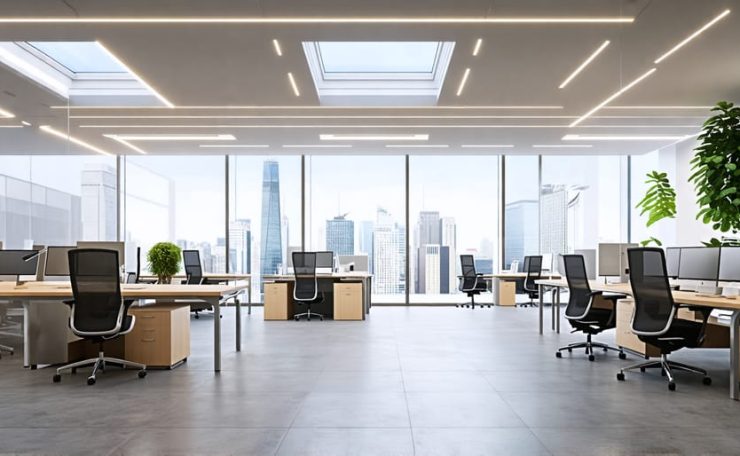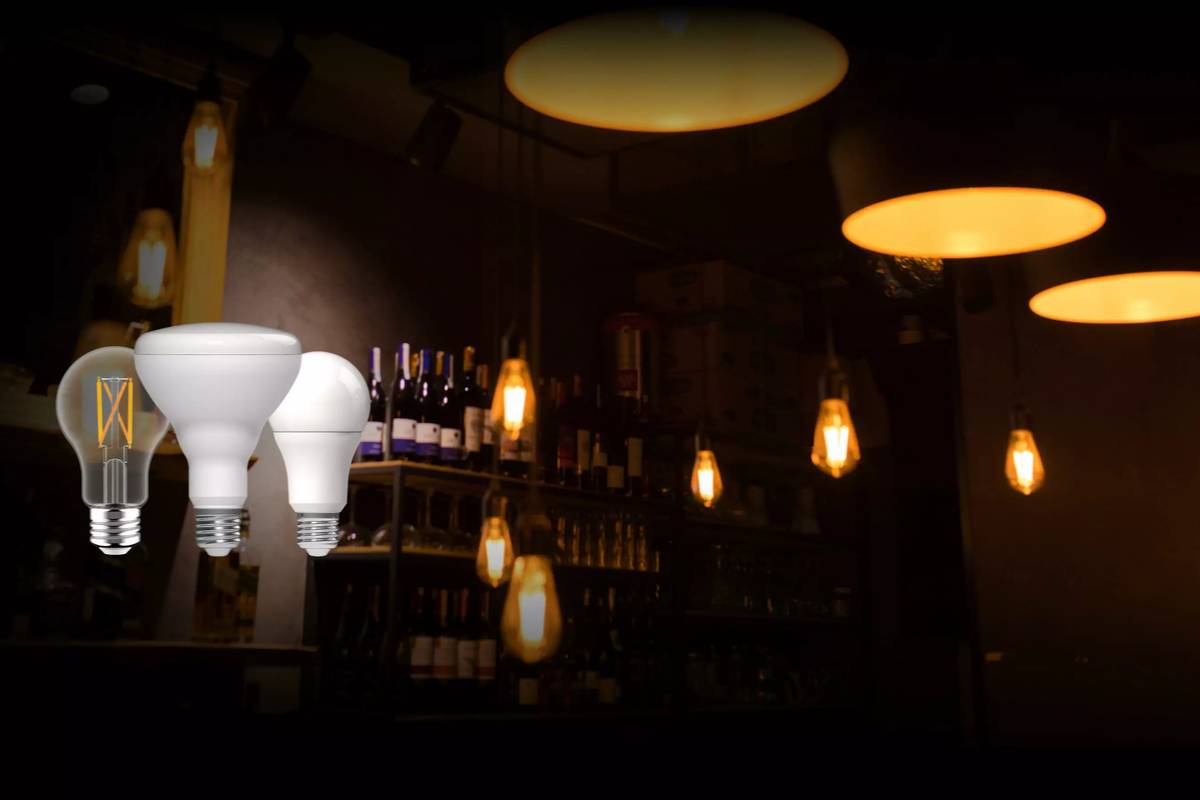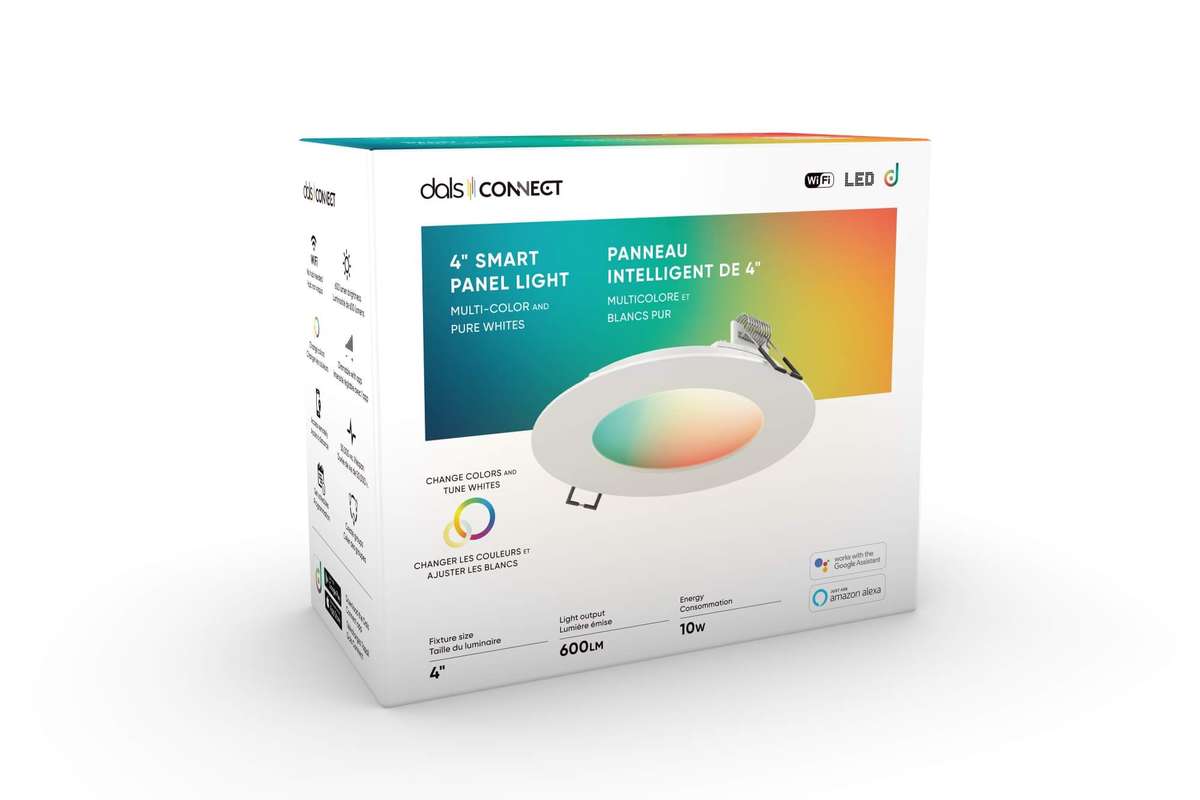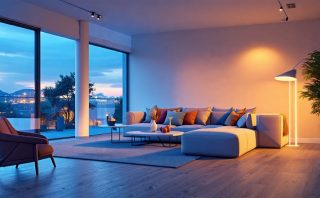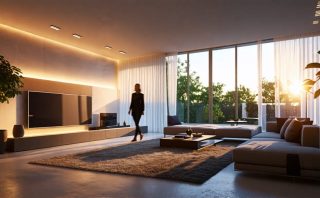Choose LED bulbs over fluorescent lighting to reduce exposure to potentially harmful UV radiation and minimize eye strain. Opt for full-spectrum solutions that mimic natural daylight, enhancing both mood and productivity. Incorporate dimmable lighting options to adjust brightness levels according to tasks, reducing glare and preventing headaches. Stay informed about the latest lighting trends to explore aesthetically pleasing yet health-conscious alternatives. Consider consulting with lighting experts to customize setups for optimal well-being and design harmony.
Understanding Fluorescent Lighting
How Fluorescent Bulbs Work
Fluorescent bulbs operate using a relatively straightforward process that combines a handful of key components to produce light efficiently. Inside these bulbs, you’ll find a gas-filled tube with electrodes at each end. When the light is switched on, an electrical current flows through the electrodes, exciting the gas molecules and causing them to emit ultraviolet (UV) light. This UV light interacts with a phosphor coating on the inside of the tube, transforming into visible light that provides illumination. This process is highly efficient compared to traditional incandescent bulbs, as it generates less heat and uses less energy for the same amount of light output. While fluorescent bulbs are lauded for their energy-saving properties, it’s important to consider their potential health impacts, especially regarding UV emissions and flickering, which some individuals may find bothersome. Understanding how these bulbs work can guide you in choosing the best lighting solutions for your space, balancing efficiency with health and comfort considerations.
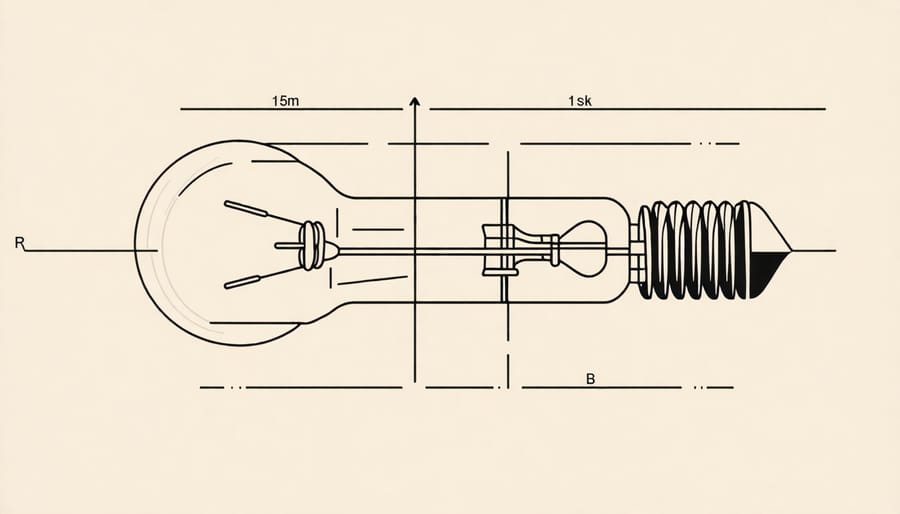
Common Uses of Fluorescent Lighting
Fluorescent lighting is widely utilized across various settings due to its energy efficiency and bright, even light output. In residential spaces, it is commonly used in kitchens, garages, and basements where bright lighting is essential, offering an efficient alternative to traditional incandescent bulbs. Commercial environments, such as offices and retail stores, benefit from fluorescent lighting’s ability to illuminate large areas cost-effectively, creating a welcoming and productive atmosphere. In industrial settings, fluorescent lighting serves in warehouses and manufacturing plants, providing ample illumination needed for safety and operational efficiency. Its versatility in diverse applications makes it a go-to choice despite emerging concerns regarding health effects.
Health Concerns Associated with Fluorescent Lighting
Flicker and Eye Strain
Fluorescent lighting has been a staple in various settings due to its energy efficiency and affordability. However, one of its lesser-known drawbacks is the flickering effect, which can be a concern for those seeking optimal lighting conditions. Flickering occurs when the light oscillates rapidly, often imperceptibly, due to variations in the power supply. While this might seem trivial, even subtle flicker can lead to significant discomfort for some individuals. Studies suggest that exposure to flickering lights might contribute to eye strain, discomfort, and even headaches. This can be especially problematic for those who spend extended periods under such lighting, like in office or commercial environments. For this reason, it is important for homeowners and professionals to consider alternative lighting solutions, such as LED options, which offer flicker-free illumination, reducing the risk of associated health issues. Keeping these factors in mind can help create a healthier and more comfortable lighting environment, tailored to your specific needs.

Exposure to Ultraviolet Radiation
Fluorescent lighting is a common choice in many homes and commercial spaces due to its energy efficiency and bright illumination. However, concerns have been raised about exposure to ultraviolet (UV) radiation emitted by these lights. While fluorescent lamps primarily produce visible light, they also emit small amounts of UV radiation, which can potentially affect skin and eye health. Prolonged exposure to UV radiation may increase the risk of skin damage, contribute to premature aging, and exacerbate conditions like photosensitivity or even increase the risk of skin cancer in sensitive individuals. Additionally, UV radiation can cause eye strain and discomfort, potentially leading to conditions such as cataracts over long-term exposure.
For those seeking alternatives that minimize these risks while maintaining superior lighting aesthetics and functionality, considering options like LED lighting—which emits negligible UV radiation—can be beneficial. By selecting the right lighting solutions, individuals and businesses can achieve optimal illumination without compromising health or design aspirations. Exploring innovative lighting designs and consulting with experts can help find the perfect balance between safe and stylish lighting environments.
Emotional and Psychological Impacts
Fluorescent lighting, while cost-effective and energy-efficient, can have notable emotional and psychological impacts on individuals exposed to it over extended periods. Many people report feelings of anxiety and stress when working under fluorescent lights, largely due to their fluctuating nature. This flickering, often imperceptible, can disrupt the human brain’s normal function, leading to increased agitation and concentration difficulties. Moreover, for those prone to migraines or sensitive to light, these effects can be more pronounced, triggering headaches and further negatively affecting mood and productivity.
The high color temperature of fluorescent lights tends to emit a cooler, harsher light compared to natural sunlight or incandescent lighting. This type of artificial illumination can potentially suppress melatonin production, disrupting sleep patterns and leading to feelings of fatigue and irritability. Over the long term, such disruptions may contribute to the development or exacerbation of mood disorders, such as depression.
For homeowners, interior designers, and commercial business owners seeking healthier lighting solutions, transitioning to alternatives that mimic natural daylight and offer adjustable warmth can mitigate these adverse effects. Understanding these psychological impacts allows for more informed choices about lighting design, promoting well-being in both residential and commercial environments.
Alternatives to Fluorescent Lighting
LED Lighting Solutions
LED lighting solutions have become the preferred choice for those seeking a healthier and more efficient alternative to traditional fluorescent lighting. One of the most significant benefits of LED lights is their superior energy efficiency, using up to 80% less energy, which translates to substantial cost savings over time. Moreover, LEDs are engineered to minimize flicker, a common issue with fluorescents that can lead to eye strain and headaches. This makes LEDs a comfortable option for both residential and commercial spaces. Additionally, LED lights emit significantly lower levels of UV radiation, reducing the potential for UV-related health issues and mitigating damage to artwork and fabrics. With advancements in LED technology, you can enjoy a wide range of color temperatures and intensities, enabling customized lighting solutions that enhance any environment. Consulting with an expert can further tailor these choices to your specific needs, ensuring the ideal lighting setup for your home or business. Consider LEDs as a smart and sustainable investment in your lighting strategy.
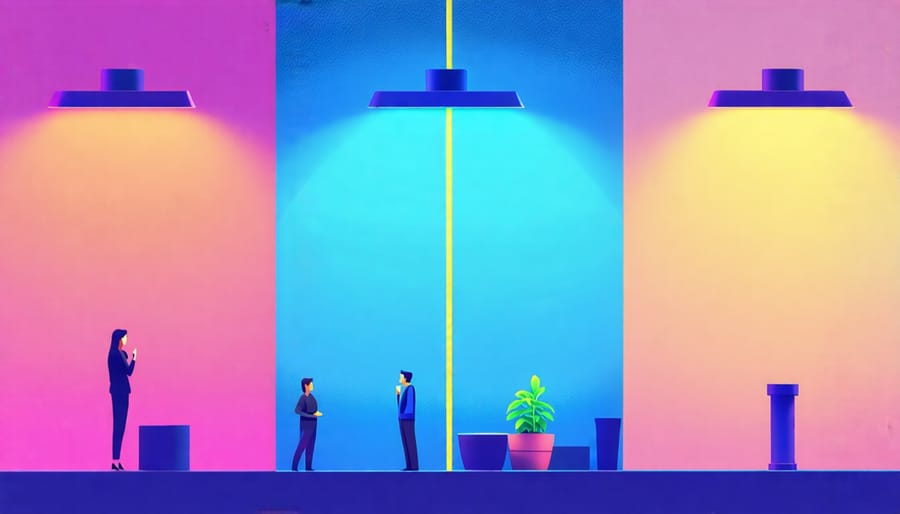
Natural Light and Smart Lighting
Integrating more natural light into our spaces is a potent strategy for enhancing health and well-being. Daylight has been shown to boost mood, improve sleep patterns, and increase productivity. Utilizing architectural solutions like skylights, larger windows, and light wells can maximize natural light exposure in homes and businesses. Alongside these, smart lighting technology offers versatile enhancements. Systems like Zigbee Lighting Control allow for seamless adjustment of lighting conditions, mimicking natural light cycles to complement our circadian rhythms. These smart systems are not just about convenience; they represent a shift towards lighting that supports healthy living. For interior designers and architects, incorporating these technologies provides a dynamic element to design, allowing spaces to adapt in ambiance and function throughout the day. Personalized consultation can ensure that selected solutions meet specific health, aesthetic, and efficiency goals, offering a tailored approach to modern lighting needs.
Implementing Healthier Lighting in Your Space
Consultation and Design Considerations
In addressing the health concerns associated with fluorescent lighting, seeking expert consultation is vital for creating personalized solutions that marry health with aesthetics. Professionals in lighting design can offer tailored advice and design strategies to minimize risks, such as eye strain and discomfort, while enhancing the visual appeal of spaces. A key consideration is integrating Smart Lighting options that adapt to your needs, improving both functionality and wellbeing. Experts can evaluate your specific environment and recommend alternatives like LED or natural lighting systems that align with your health priorities and design aspirations. This approach ensures a harmonious balance between functionality and visual comfort in all settings, from homes to commercial spaces. Engaging with a professional designer not only highlights choices but also brings expert insights that shape a healthier, more vibrant lighting experience tailored to your lifestyle.
Cost and Benefits Analysis
Switching from traditional fluorescent lighting to healthier alternatives offers significant long-term cost and health benefits. Fluorescent bulbs, often criticized for their harsh light and potential health risks such as headaches and eye strain, can be replaced by LED or natural lighting solutions that are not only healthier but also more cost-effective over time. While the initial investment for LED lighting may be higher, these bulbs have a longer lifespan and consume less energy, leading to reduced electricity bills and fewer replacements. Additionally, improving lighting quality can enhance productivity and wellbeing, especially in work environments, by creating a more comfortable and aesthetically pleasing atmosphere. This change not only addresses health concerns but also adds value to your space, making it a wise investment for both homeowners and businesses.
Conclusion
In conclusion, choosing the right lighting solutions is pivotal for enhancing both well-being and design aesthetics. This article has highlighted the adverse health impacts associated with fluorescent lighting, such as eye strain and headaches, and its insufficiency in creating a warm, inviting atmosphere. Instead, we explored alternative solutions like LEDs and smart lighting systems that not only reduce health risks but also offer innovative design opportunities. With options like customizable color temperatures and Lighting Automation, homeowners and professionals alike can personalize spaces to reflect comfort and style. By understanding these different lighting technologies, one can make informed decisions that promote health and well-being while enhancing the visual appeal of any environment. With expert insights and practical advice, DonsBulbs Lighting Design remains committed to helping clients navigate the complexities of lighting to find tailored solutions that meet their specific needs.

